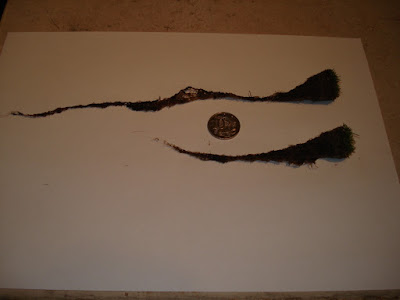20mm of rain in the gauge on Christmas morning was a very welcome Christmas present and the follow up showers have been a bonus and don't seem to have affected play too much. The grass has already started to jump and as always the short working weeks and volume of play at this time of year make it tough to keep up with all the work that needs to get done. I have noticed it before prior to rainfall and will keep an eye out in future but on Christmas eve morning a flock of seagulls was gathered on the dam at 4 / 9 West preening themselves and then spent most of the day there and sure enough in came the rain. They were also there again this morning so with no rain in the forecast it will be interesting to watch. It's always hard to tell with so many people having their own signs of rain to come. A couple of other local ones I have heard of are the arrival of the black cockatoos who were actually very active this morning and the swallows flying about low to the ground feeding which I have seen a few times myself but no rain had followed. Let's just hope we get enough rain across the country to break this dryspell.
 |
| The seagulls are in? |
With no more significant rainfall, 2019 will figure in the four driest years on record for Tweed Heads with 961mm so far this year. There have only been three years when less than 1000mm has been recorded and that was in 1902 - 689mm, 1915 - 858mm and 1986 with 962mm. The average yearly rainfall for Tweed Heads since 1888 is 1665mm so yes it's been a dry one.







